Imagine waking your family up at 9:00 AM on a Saturday morning and saying, “Get dressed, or we’ll be late for the pig slaughter.” For the people of the Louisiana Bayou, it’s as natural as saying, “Get dressed, or you’ll be late for school.” At Lafourche Parish’s Festival of Old Times, arriving late means missing the crucial beginning of what will be an all-day process, and the cornerstone of the fair itself: the slaughter, preparation, and consumption of a pig. As the pig was shot between the eyes with a bolt gun, a mother turned to her son and said, “See? That’s how pork boudin is made.” Unflinching, the boy watched with impressive focus.


You Haven’t Experienced Louisiana’s Cajun Bayou Until You’ve Eaten Your Way Through It
In the Bayou, people seem to take as much pleasure in preparing food as actually eating it, which explains why the pig — six hours of shaving, carving, and roasting — is the festival’s main event. In Cajun country, a meal isn’t just something you eat, it’s a journey, and for many Cajuns it’s important to understand (and witness) where that journey begins. With so many eateries eager to share their Cajun cooking, however, visitors to the Bayou can find it difficult to know where their own journey should begin. Luckily, you don’t have to slaughter a pig for a good meal. To eat your weight in Cajun food the right way, just slip on some stretchy pants and follow the Cajun Bayou Food Trail.
The real Cajun country
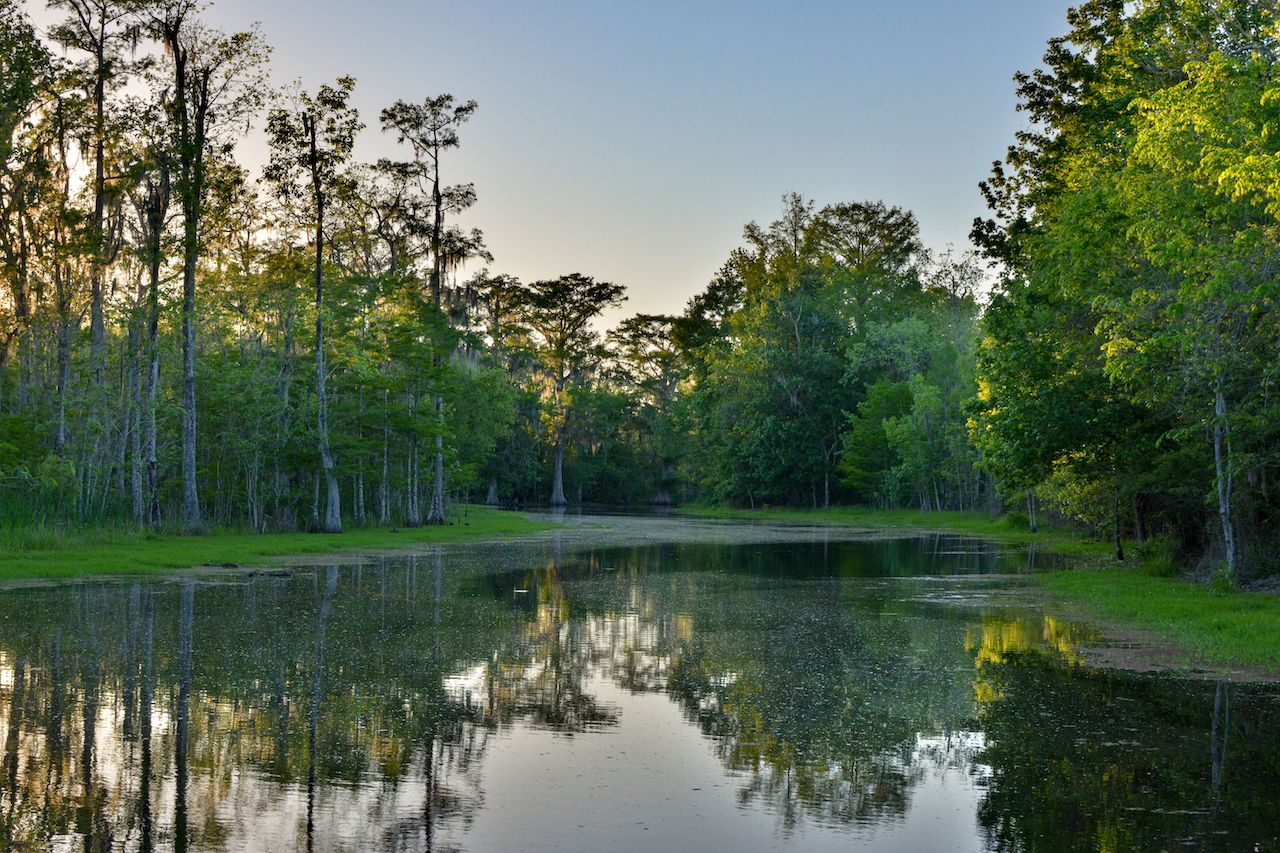
Photo: Realest Nature/Shutterstock
There’s one thing all Louisianans can agree on: They do Cajun food better than anyone else in the country. What they can’t seem to agree on, however, is which part of the state does it best. New Orleans and Lafayette receive much of the spotlight due to their size, but real Cajun country lies about an hour and a half south of the capital in Lafourche Parish. The parish is named after Bayou Lafourche, a 106-mile long Bayou that flows alongside the highway. “Lafourche” translates to “the fork” because the Bayou is a fork of the Mississippi River, but that translation might as well refer to the culinary tradition, which is the keystone of the parish’s identity. They created a food trail to help guide visitors through 16 of the parish’s most locally renowned eateries. As if eating copious amounts of fried food wasn’t fun enough already, you can even collect food “passport” stamps at each restaurant you visit.
My introduction to the area’s fierce devotion to food came before I even reached Bayou Lafourche while having breakfast in nearby St. Tammany Parish. Liz’s Where Y’at diner was overflowing with ravenous patrons, but Liz still greeted me with a hug and insisted I try her famous “Goolosh” — grits, eggs, roast beef debris, and a biscuit — and Banana Foster French Toast. Immediately, it was clear that small portion sizes weren’t going to be an issue in Louisiana.
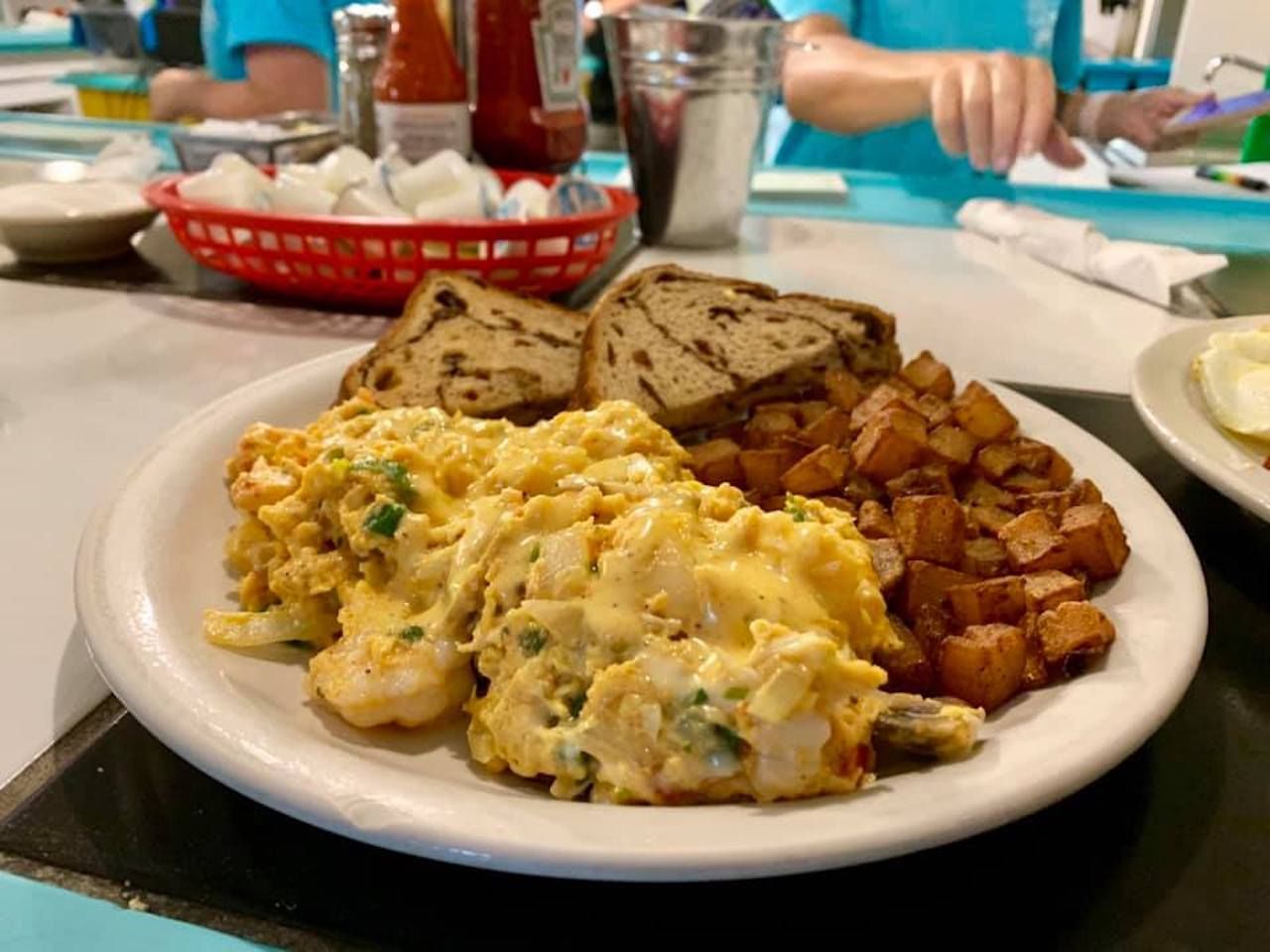
Photo: Liz’s Where Y’at Diner/Facebook
“Down here we’re always thinking about food,” Liz told me. “Even at breakfast, we’re already planning lunch and dinner.”
That was no joke. In a place where food is a valuable currency, meeting a beloved restaurateur like Liz felt like meeting a celebrity. As I continued south to Bayou Lafourche, it became obvious that eateries — especially those that looked more like gas stations than restaurants — were the linchpins of local communities.
Eat your way down the Bayou
Thibodaux, the seat of Lafourche Parish, is the most natural place to begin your Cajun food odyssey. The town of just over 14,000 people is the largest in the parish, home to some of the area’s best Cajun eateries, and the gateway to the rest of the Bayou.
In Lafourche, you don’t travel north or south, you travel “up the Bayou” or “down the Bayou.” Before you head “down the Bayou” along Highway 1, stop at Bubba’s II PoBoys and Seafood in Thibodaux. Po’boys are a staple of Cajun cuisine, usually consisting of a French bread sandwich stuffed with roast beef or fried seafood. Don’t expect a gourmet presentation. Po’boys are messy, you’ll definitely get mayo or roast beef juice all over your fingers, and that’s kind of the point. Bubba’s II serves up classic crawfish, shrimp, oyster, and roast beef po’boys, and when you place your order, they’ll ask if you want your po’boy “overstuffed.” You may be inclined to play it safe, but the only acceptable answer is “yes.”
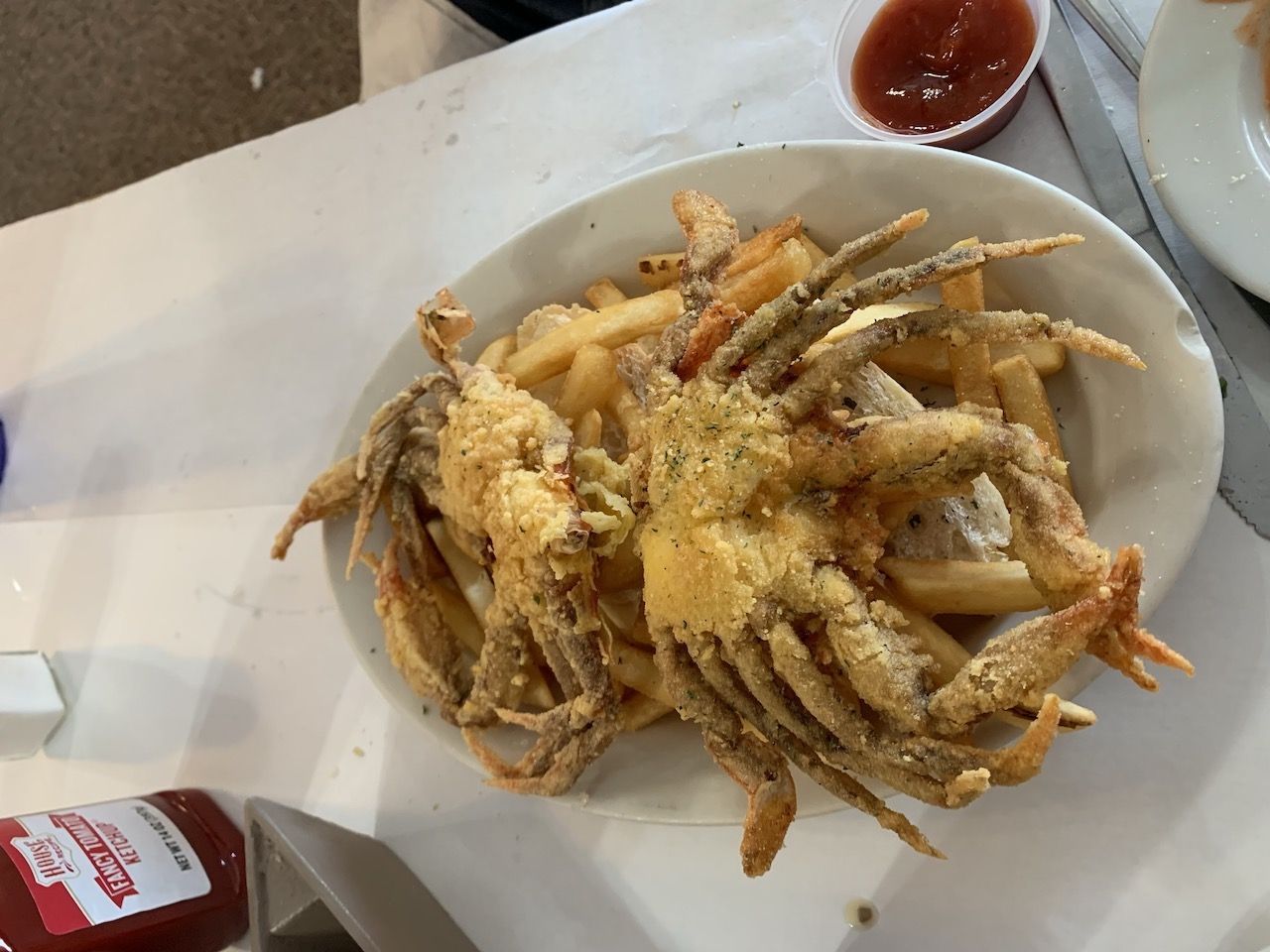
Photo: Eben Diskin
The overstuffed po’boy should tide you over for a while as you drive down the Bayou to Leeville. About an hour and a half from Thibodaux you’ll find some of the best fried seafood anywhere in Cajun country at Leeville Seafood Restaurant. Like all eateries in Lafourche, the fish are sourced directly from the Bayou and caught by local fishermen. The redfish, crawfish, tuna, soft-shell crab, and catfish are among the most popular options here, and the restaurant even offers an all-you-can-eat fried catfish special on Wednesday nights. The most memorable dish, however, might be the shrimp étouffée — a thick Cajun soup of shrimp over a tomato, onion, celery, bell pepper, and garlic base.
Whether you find yourself driving back to Thibodaux or spending the night down the Bayou, Rose’s Cafe is a local favorite at pretty much any hour of the day. Located 20 minutes north of Leeville in Galliano, Rose’s is open from 5:00 AM to 9:00 PM every day except Sunday. The cafe plays an integral role in the community, opening early to cater to local fishermen and tugboat workers who frequent the cafe during crew change. This definitely isn’t a bring-your-own-food establishment, but there is one exception.
“If a fisherman comes in with a fresh catch,” said Gina, the owner, “I’m happy to fry it up for them. It’s no problem.”
If you don’t feel like waking up at 4:00 AM to catch your own meal, however, there are plenty of options at Rose’s for breakfast, lunch, or dinner. The S.O.S. (Shit On a Shingle) — pork sausage in white gravy on a biscuit — is a Bayou staple, and the cinnamon rolls are dangerously addicting. Rose’s might be best known for its shrimp platters, however, which come with a range of sauces made in house.
Dining in Thibodaux
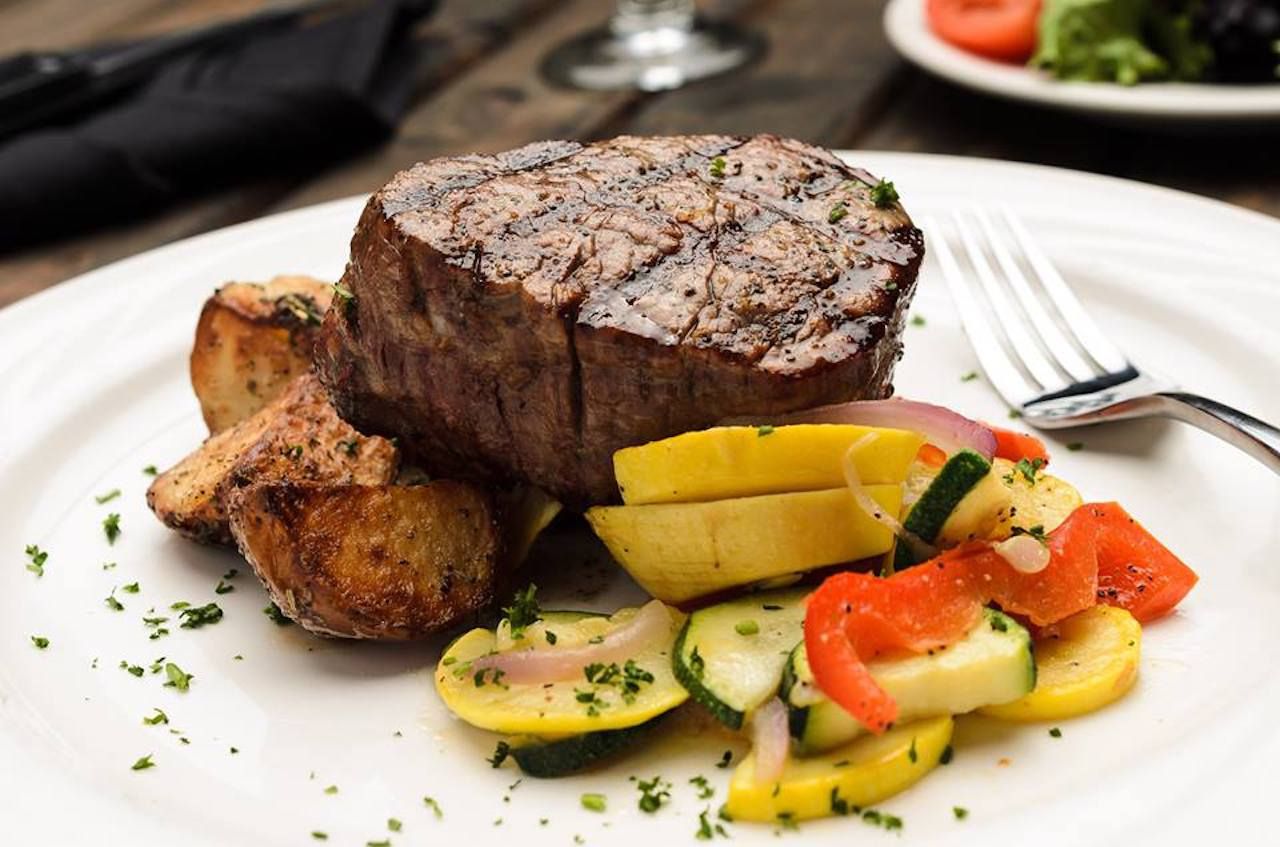
Photo: Fremin’s Restaurant/Facebook
Dining in the Bayou usually means rolling up your sleeves, untucking your shirt, and certainly not bothering to put a napkin on your lap. But that doesn’t mean good Cajun food can only be found at diners. One of the best Cajun dining experiences is at Fremin’s Restaurant in Thibodaux. Fremin’s is defined by its 19th-century aesthetic, which evokes Louisiana’s past, and by its menu of gourmet food. Like everywhere else in the Bayou, the seafood is sourced locally from the Bayou and Gulf of Mexico. Even if you’ve spent the last few days indulging in seafood, Fremin’s redfish, crabmeat, gulf shrimp, and oysters won’t disappoint. The Steak & Crab des Allemands is the perfect surf-and-turf combo for those craving a bit of variety.
Fremin’s might be upscale, but it doesn’t skimp on the portion sizes. If by some chance you’re not full after dinner — or just have absolutely no self-control — walk across the street to Cinclare Southern Bistro, which is legendary for its Alligator and Andouille Cheesecake. It’s not something you’d find in the glass case at the Cheesecake Factory. This savory cheesecake resembles a quiche, except it’s filled with pieces of alligator meat and andouille sausage, and topped with a crawfish cream sauce. You can’t mention Cinclare in Thibodaux without hearing glowing reviews of this Cajun treat.
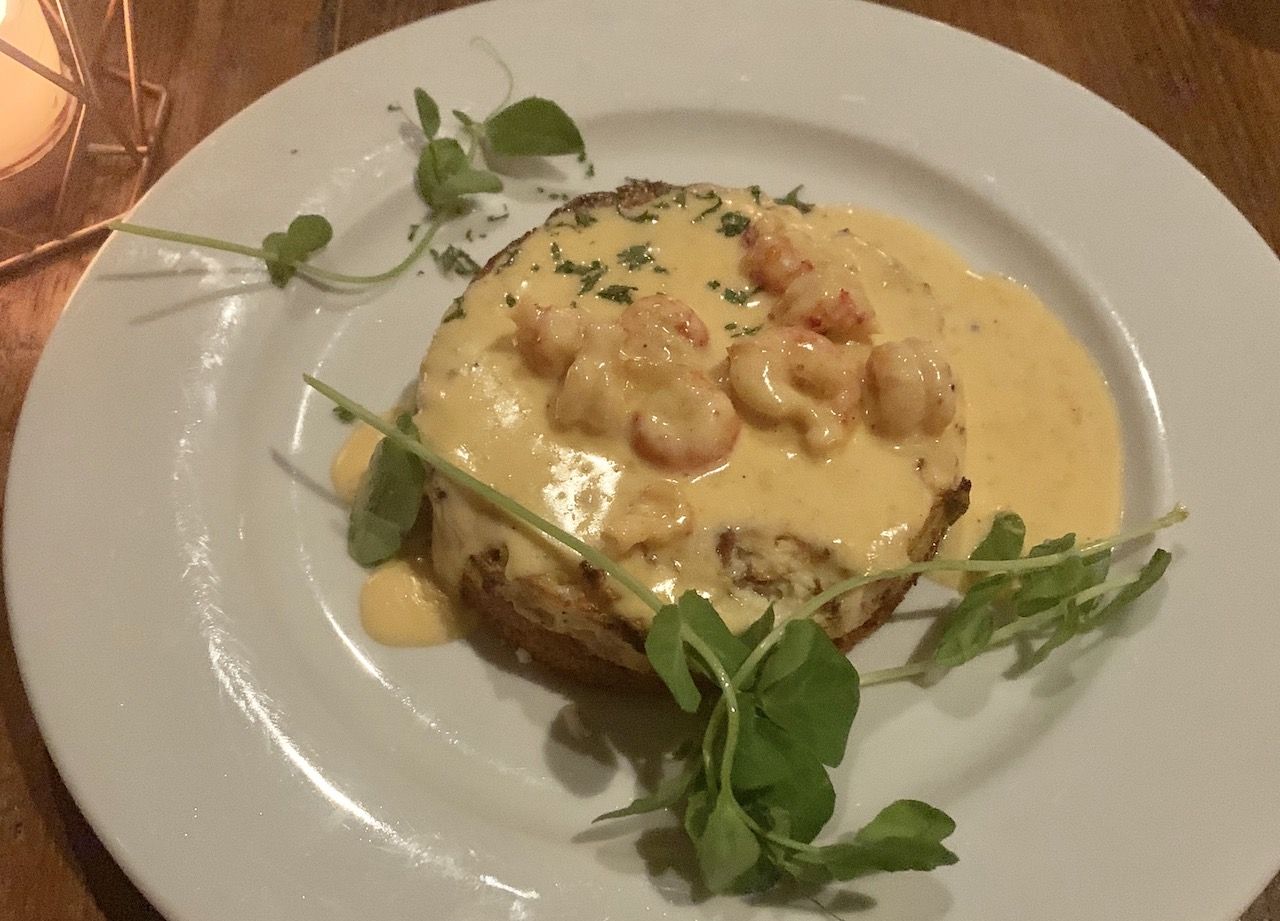
Photo: Eben Diskin
There’s no shortage of good Cajun breakfast places along the Bayou, but for a high-end option with a dedicated brunch menu, check out Flanagan’s in Thibodaux. Whether it’s their beignets, shrimp and cheese grits, eggs atchafalaya, or blackened chicken crawfish Monica, it’s tough to make a bad decision here. And every Sunday from 10:00 AM to 2:00 PM Flanagan’s has a Jazz Brunch where you’ll be treated to a performance by a local Jazz ensemble.
At each restaurant stop, don’t forget to get your food trail passport stamped. Collect five and you’ll receive a free Bayou t-shirt from the local tourism office in Raceland. A word to the wise, however: Whatever shirt size you thought you were before the trip — get one size up. You’ll thank me later.
Meet the Bourgeois
Residents of the Bayou support their favorite restaurant as staunchly as they support LSU football, but many will still tell you that the best Cajun cooking happens in their own kitchen. Sure, Cajun recipes passed down for six generations certainly help, but locals also rely heavily on the availability of fresh meat for their home-cooked meals. In the Thibodaux area, there’s only one place to go for the highest quality cuts. Bourgeois Meat Market has been a fixture of the community since 1891. More than 120 years and four generations later, the market is still owned by the Bourgeois family.
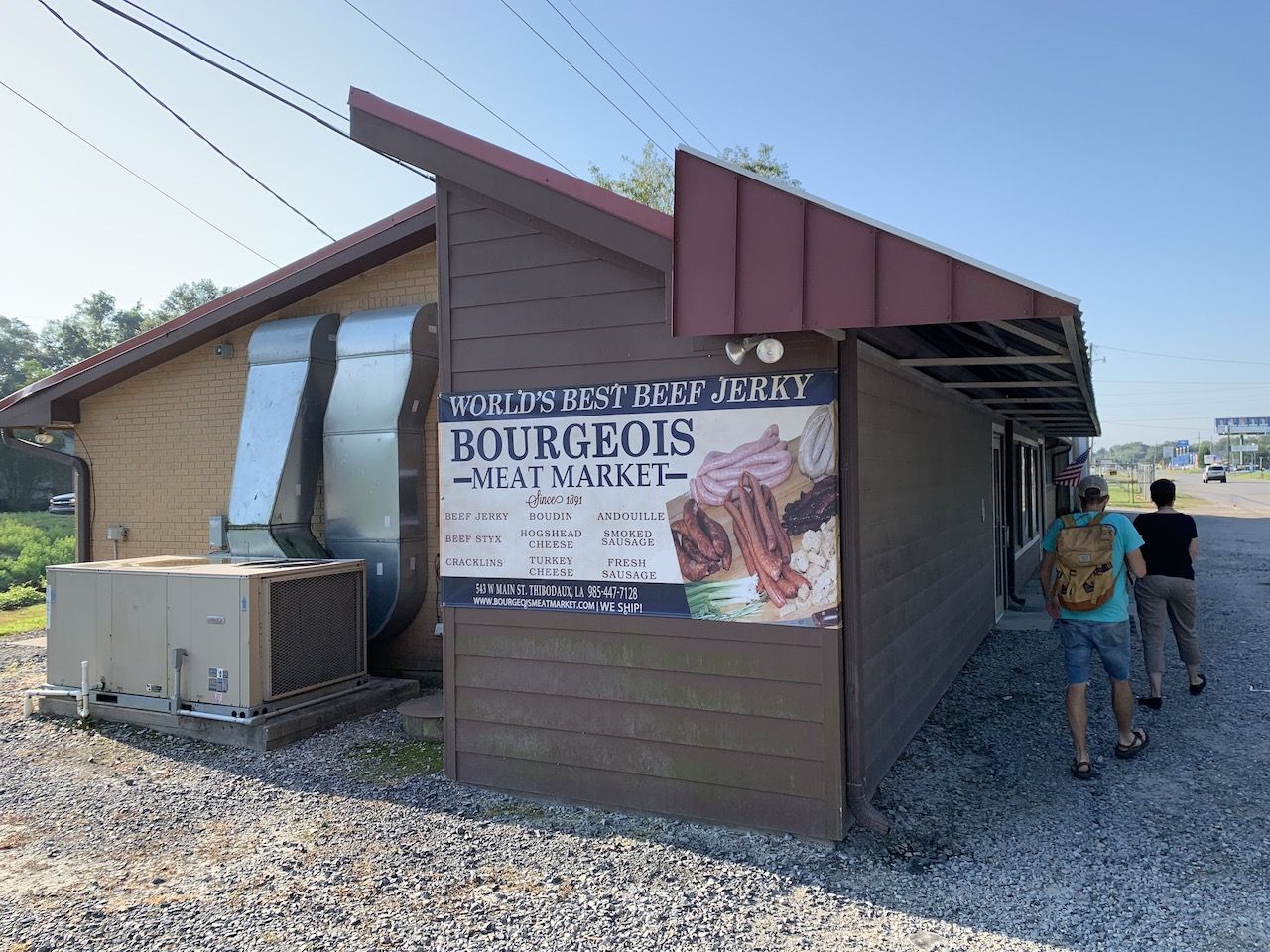
Photo: Eben Diskin
By far, the market’s most popular product is its beef jerky. The exact recipe is a closely guarded secret, but it’s made with extra lean steak, seasoned and marinated for 24 hours, hung individually from nails on long rails, then smoked all day for flavor and texture. Bourgeois’ jerky sticks resemble thin, dried-out hot dogs stuffed with beef, and people buy them by the pound.
You may not be too familiar with boudin, but it’s another one of the Bourgeois’ most popular offerings — and it’s a staple of Cajun cuisine. Boudin may look like a sausage, but it’s not. It comes in many forms, but it’s basically a combination of cooked rice, pork, onions, green peppers, and seasonings, pulverized in a meat grinder and stuffed into sausage casings. If owner Beau Bourgeois or manager Shane Thibodaux is in the shop — which they always are — they’ll be happy to tell you more about boudin, and maybe even let you sample a few pieces.
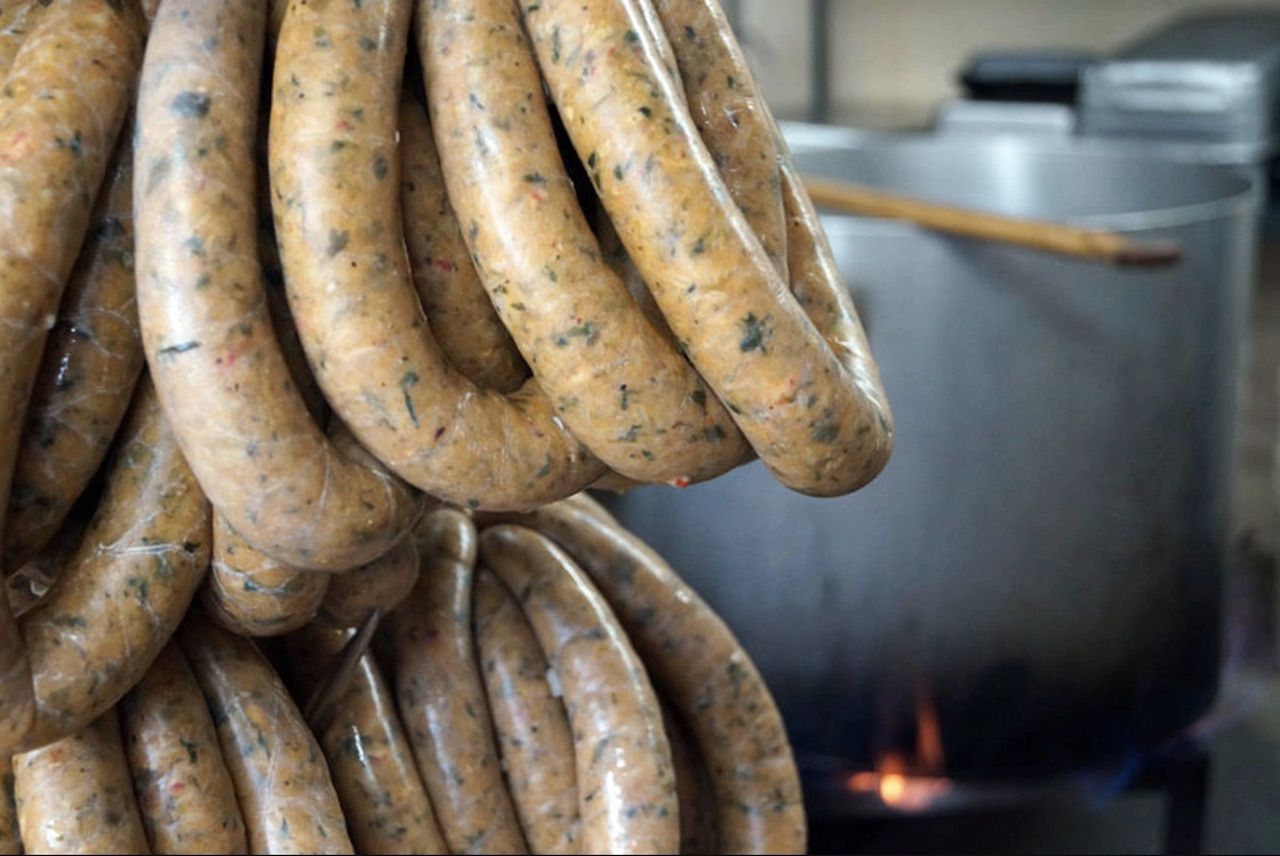
Photo: Bourgeois Meat Market
As a line of customers extended nearly out the door on a Saturday morning — most of them eagerly anticipating their gameday jerky or boudin — Shane explained to me that boudin isn’t just a snack in the Bayou, but a currency.
“People buy it for family gatherings, gifts, and even trades,” he said. “An oil salesman who comes bearing boudin knows they’re getting the business over one who doesn’t.”
Although Shane shared with me some of the market’s best boudin, jerky, and hog’s head cheese, I still had a craving for my most anticipated dish — jambalaya. The Cajun version of this dish is sometimes called brown jambalaya, and lacks tomatoes, while the Creole version found in New Orleans is called red jambalaya. No one actually calls it that in either place, though. Whichever part of the state you’re in, their version of jambalaya is just jambalaya.
A meal often served at home, but rarely in restaurants in this region it seems, jambalaya was surprisingly hard to come by in the Bayou. Luckily, Saturdays in the Deep South mean tailgating, and my quest for jambalaya was about to take an unexpected turn — thanks to Shane and the Bourgeois family.
“Jambalaya?” said Shane. “My cousin Beau’s mixing up some jambalaya down at the Nicholls tailgate. He’ll be there all day. Just look for the Bourgeois tent.”
And just like that, instead of relaxing in my hotel room digesting the absurd quantity of meat I had just consumed, I spent the afternoon at the NSU tailgate eating jambalaya. I couldn’t tell you who won the game, but I can say that if you’re looking for a home-cooked Cajun meal, but haven’t exactly been invited to a family dinner, tailgating is the next best thing.
While you digest…
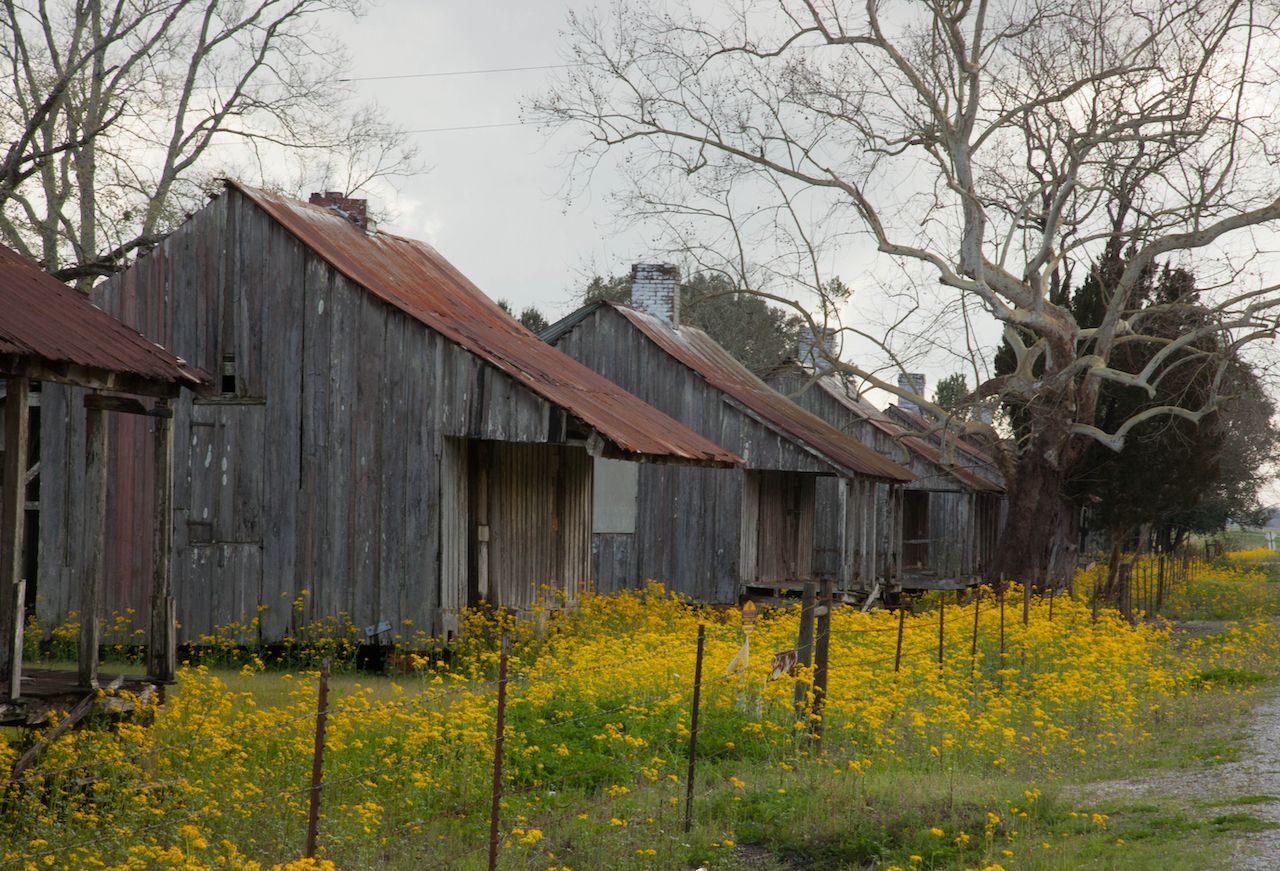
Photo: G Allen Penton/Shutterstock
Rumor has it, some travelers want to do more on vacation than just eat. If you’re one of those people, there are plenty of inter-meal excursions to help you replenish your appetite. History buffs should be sure to check out the Laurel Valley Sugar Plantation in Thibodaux, the largest surviving 19th- and 20th-century sugar plantation in the US. The original general store acts as a visitor center of sorts, and the original church, schoolhouse, and slave cabins are available for touring. As with any plantation, Laurel Valley’s history is complex and even upsetting, but the owners present that history thoughtfully and in a truly educational context. You may even recognize parts of the plantation from movies like Ray, Interview with the Vampire, and Crazy in Alabama, which were filmed there.
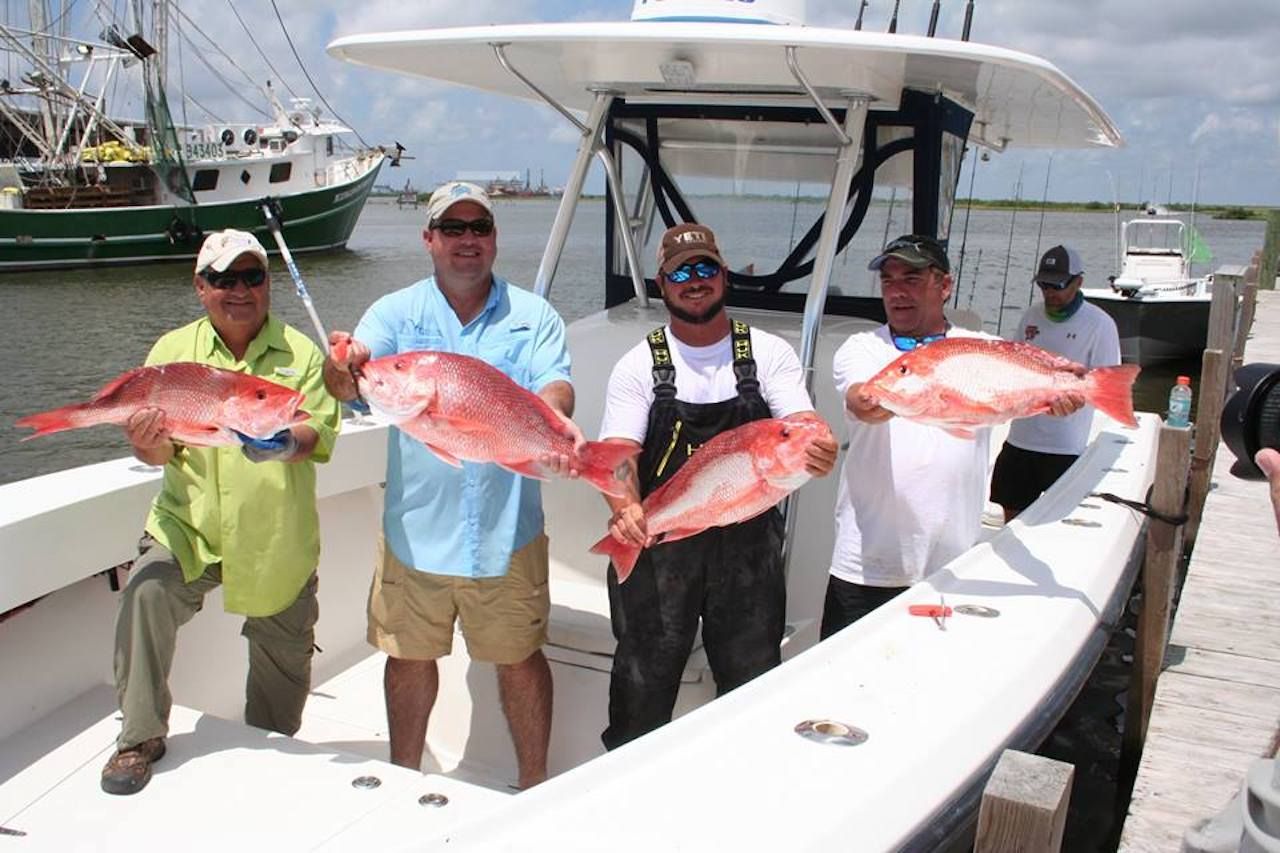
Photo: Louisiana’s Cajun Bayou/Facebook
If you really want to see how people living on the Bayou spend their time, you should charter a fishing boat and try your luck in the wetlands yourself. Fishing is the lifeblood of the Bayou; pretty much everyone is either a fisherman themselves or knows several. Charter Fishing is popular among visitors, as local captains can bring you out to either inland waters or even the Gulf of Mexico. Redfish, trout, tarpon, and flounder are plentiful closer to shore, while offshore near the oil rigs you may find tuna, wahoo, or even a marlin. You’ll need a fishing license to cast a line in Louisiana, but these are relatively easy to procure — just ask your captain, or check out the rules online.
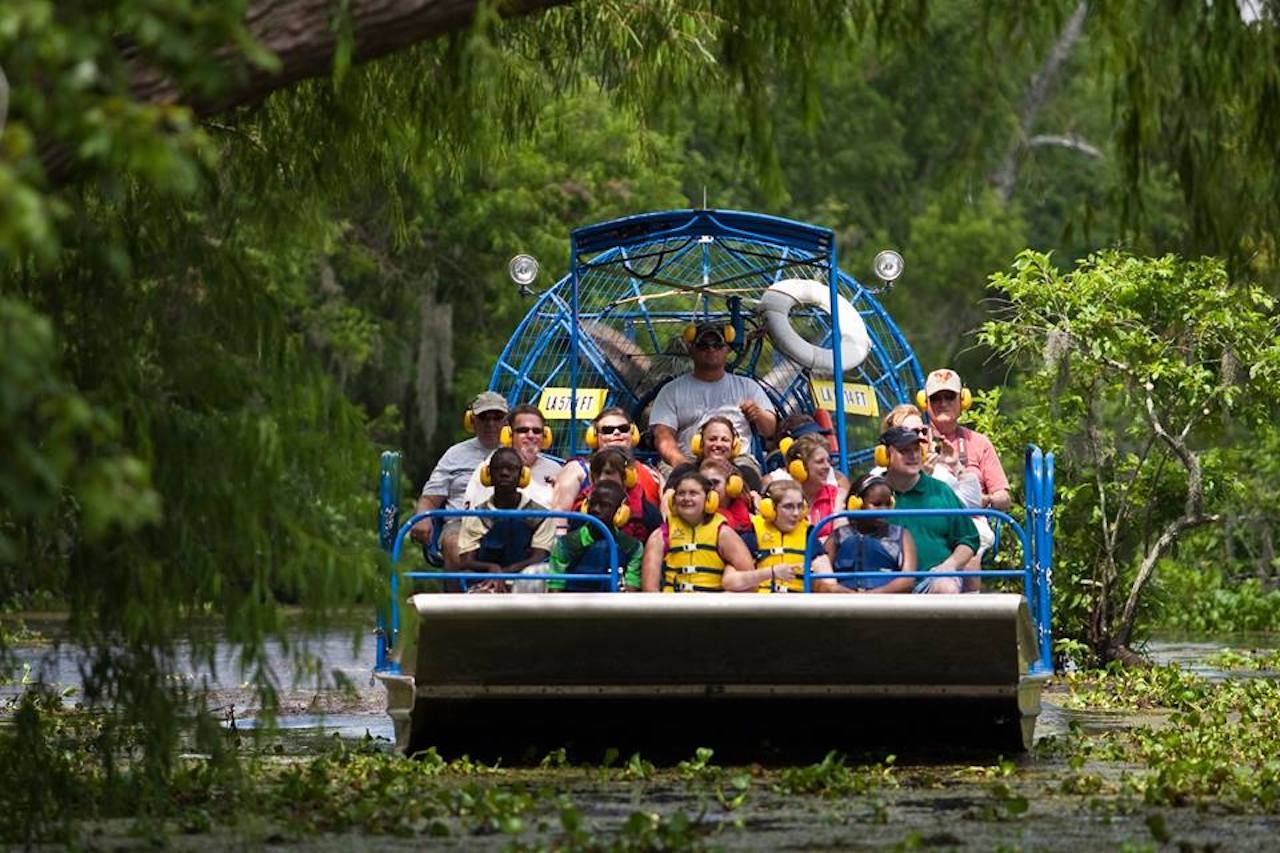
Photo: Airboat Tours By Arthur Matherne Inc./Facebook
If you aren’t equipped to cast a line, you can still take to the water with an airboat through the Bayou. You’ve probably heard that the Louisiana swamps are chock full of alligators, and the hype is true. Just a half-hour east of Thibodaux, Airboat Tours by Arthur in Des Allemands will bring you out on the swamps and up-close and personal with dozens of gators. If you’re lucky, local alligator celebrities Bubba, Alice, and her “boyfriend” Big Al will make an appearance, and they’re pretty comfortable around people, so don’t be surprised if they come right up to the boat. Whipping around the Bayou in an airboat is unforgettable, but according to a source who shall remain nameless, doing it right after eating a ludicrous amount of boudin, jerky, and jambalaya isn’t the smartest idea.